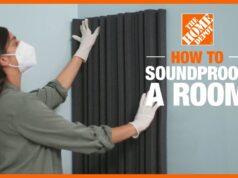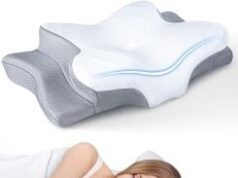
Even before the COVID-19 pandemic shuttered retailers across the country, increasing numbers of consumers were opting to shop online, rather than making the trip to brick-and-mortar stores. And while that trend has largely continued, according to data from a recent report, two segments of the retail landscape have seen foot traffic return: Thrift shops (which have been covered in previous Lifehacker posts) and discount stores like T.J. Maxx, Marshalls, Burlington, and Ross Dress for Less—which are the focus today.
Commercials for these discount retailers make it sound like their merchandise is coming directly from high-end department stores and flagship stores, sold to you at a fraction of their original price. But, as two recent viral TikTok videos have explained, the truth is a little murkier—including the fact that the clothing sold in those stores is often made specifically for them.
How does clothing end up at discount retailers?
As two TikTok creators who have worked in the fashion industry, @itslaurendeleon and @kingkattoo, explain in recent videos, a lot—if not most—of the merchandise sold in off-price retailers like T.J. Maxx and Nordstrom Rack weren’t brought in from full-price stores with unsold merchandise. Instead, that merchandise was deliberately designed to be sold at lower prices.
In fact, @kingkattoo, who explains that they’re a designer and has worked at companies that have sold merchandise to these discount retailers, says that “overstock doesn’t really exist, because that’s not how the fashion industry works.” Instead, holding companies that own American heritage brands, like Calvin Klein, instruct designers to create items to be sold at particular price points. For example, one designer may be asked to design sweaters to be sold at $50 at a department store, while another is asked to design a $20 sweater to be sold at off-price retailers. From there, @kingkattoo explains, all decisions throughout the process—like the fabric, lining, and finishes—are made with that cost in mind.
Signs an item of clothing was made specifically for a discount retailer
Similar to the clothing made exclusively to be sold at a brand’s outlet stores, there are a few features you can look for that are a good indication that an item has always been destined to be sold at a discount:
White-label product tags
In their TikTok video, @itslaurendeleon says that plain white tags, like the one in the screenshot below, are a “telltale sign” that a piece of clothing is either a sample, or a “white label product”—meaning that “anyone can buy in a wholesale capacity and put their own label on it and call it theirs.” It also means that the garment isn’t “going to be the same quality or the same style that you’ll see on the brand’s website,” they note.

Credit: Screenshot/@itslaurendeleon/TikTok
The availability of sizes and colors
When a particular clothing product is available in all sizes—rather than in a handful of unpopular sizes that are typically the ones leftover—there’s a good chance that it was made specifically for a discount retailer, says Giovanni L. Bordone, course leader in Fashion Business at London Metropolitan University. Along with the wide range of sizes, Bordone says that this type of discount merchandise is also typically available in limited varieties and colors.
Manufacturing location
According to Bordone, checking the label to see where the garment was manufactured may hold another clue. More specifically, some brands have their production in China, but make the clothing for discount stores in Bangladesh and Vietnam.
Construction and stitching
Jay Barton, the CEO of men’s sportswear brand ASRV, recommends checking the overall construction and the stitching of the garment. “Products intended for bargain stores may feature less complex manufacturing features, fewer stitches per inch, or simpler stitching patterns,” he says. (This video explains what kinds of things to look for, if you’re uncertain.)
Material quality
Generally speaking, clothing made specifically for off-price stores tend to be constructed from lower-quality fabrics. “Examine the fabric,” says Barton. “If it seems less opulent, stiffer, or thinner than you would anticipate from the name, it may have been produced for a cheap retailer.”
Design and style
According to Bordone, clothing created for discount retailers may have less complicated designs with fewer details and ornamentation. Similarly, Barton says that the garment’s design “may be a more straightforward or understated interpretation of the brand’s signature aesthetic.”
Is shopping at discount retailers worth it?
When it comes to shopping, everyone has different priorities, as well as budget and time constraints. In other words, we’re not all looking for the same things.
If your concern is that the designer items sold at discount retailers aren’t “the real thing,” @kingkattoo says that’s not the case. “It’s made by the same brand usually, or at least the same holding company, to be that lower price point,” they note in their video.
Their actual advice to shoppers is that “if you like [an item of clothing] and you think it’s worth your $20, or $50, or $200, spend it—but the price on the label is the price. You’re not getting one over on these big brands, basically ever.”








